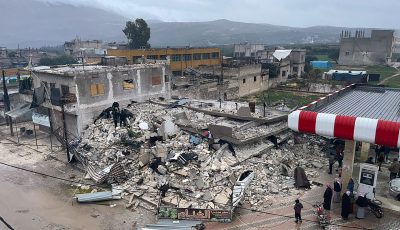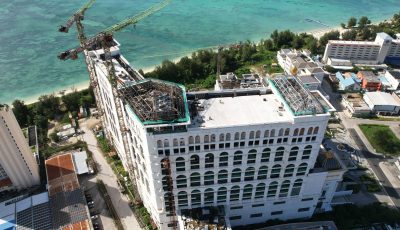TASK FORCE DAGGER
Fulfilling a promise
Task Force Dagger Foundation was recently on Saipan, looking for fallen World War II airplanes in the waters around the Marianas with the hope of retrieving artifacts that might help them identify the pilots and crewmembers.
“Task Force Dagger is composed of a group of individuals who were are all in the special operations community, representing all services—Air Force, Marines, Army, and Navy…We come from different disciplines from all over the country. We all come together for this specific event because the common thing that binds everybody is the camaraderie and fellowship when you serve and…that feeling of connection is still there, no matter what,” Task Force Dagger Foundation board member Mark Stephens said.
“Our purpose here is something that we can all relate to because many of us have been in situations where we lost somebody while in combat and not being able to bring them home. What we are doing here is fulfilling a promise that our country made—that we find them and bring them back to their families,” Stephens added.
The invasion of Saipan by American troops on June 15, 1944 went on for 24 days and thousands of U.S. military men took part in what turned out to be a huge and costly undertaking in the Pacific.
Jennifer F. McKinnon, associate professor and director of Graduate Studies at East Carolina University, said that Task Force Dagger’s current undertaking is a partnership among different entities.
“We partnered with the United States Department of Defense, POW/MIA Accounting Agency, our group Task Force Dagger, Florida Public Archeology Network, and several other partners. Task Force Dagger has a lot of background and special training that can be beneficial in that sort of recovery project, that’s why we’ve bonded and formed as a team. Ideally, we would love to have the aircraft itself and the potential to take it to the next stage as we would like to come back out and do an excavation on the site to recover the human remains,” she said.
“When the crash happened, the soft tissues goes away but the bones can be preserved on the site and recovering those, matching and sending them back to DPAA’s lab and having a DNA test on to see if they can locate one of the wrecks that were missing. …That’s ultimately what we are looking for,” she added.
Several islands were a part of the Pacific War when it happened and Task Force Dagger has chosen to come here.
According to Task Force Dagger Foundation managing director Keith David, they chose the Marianas because people here are extremely patriotic.
“For our guys, coming into a place somewhere in the Pacific is really almost like a bucket list item because this is not something the guys can do on their own. Getting a chance to go to a place where they can study the history and follow the tactics and strategy of the battles is important and life changing,” he said.
“The people in Guam and the Marianas have a level of service to the U.S. that’s extremely awesome, so this is a physical demonstration that if one of Saipan’s sons or daughters were lost, their country will spare no expense to bring them home,” he added.
McKinnon came to know Saipan from other studies under different grants in the past. “I came out to Saipan about 10 years ago interested in doing Spanish colonial research but when I came out, there was all of this World War II stuff… I’m just always thankful that the community is welcoming to the research that we do and we try really hard to work with the community and the most important thing is they’ve been good stewards of these sights for the last 75 years,” she said.
“They are part of this island, part of the history here and that the community protects those sites…without their interest and protection, that shared history, this kind of thing wouldn’t be able to happen,” she added.
Stephens said there are still some 70,000-plus military servicemen missing. “We have a lot of ground to cover and so this is a great place for us to start to learn and understand the processes that we have to do. Historically, this is a very important place. …Regardless of how long it has been, our country made a promise to those that served that ‘we would come back and get you’ and so whether it be one year or 75 years, we are one of the only countries that does this by investing the time, resources and people in doing it. It gives peace of mind for all those that served. We are grateful and honored to be part of this project as we help that process to bring them home and give closure to the family,” he added.



























